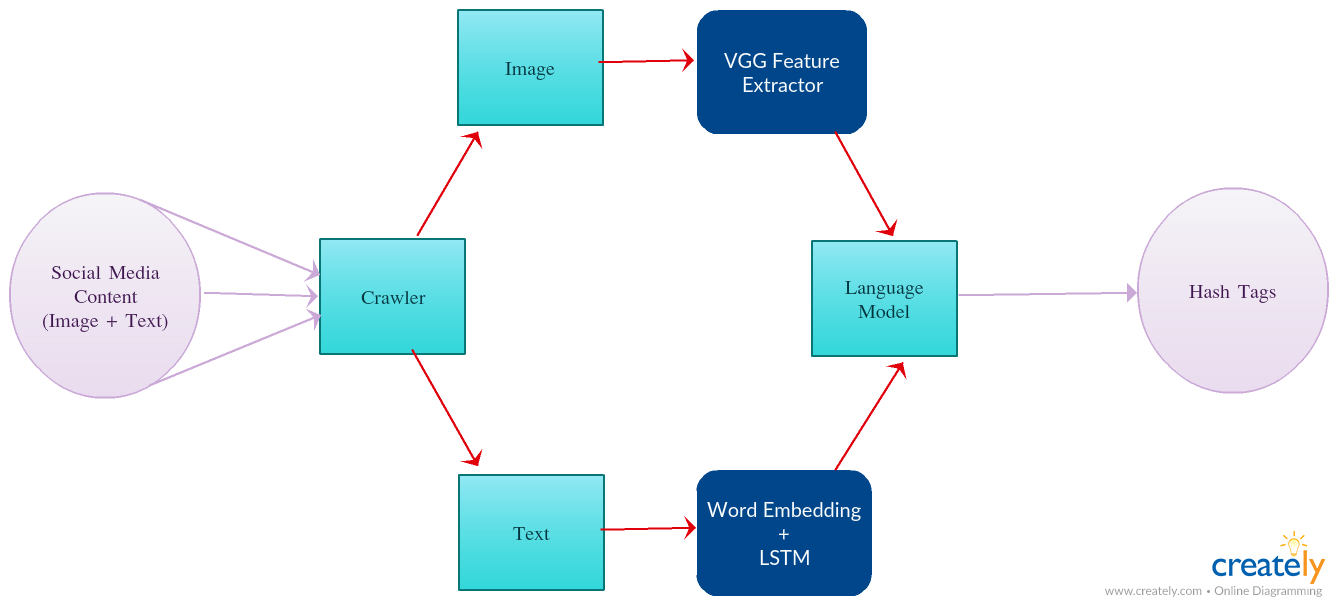Hash Tag Generator For Social Media Content
A bit about the Project
The project aims to generate hash-tags for use in social media platforms based on pictures and user inputted text. By analyzing the images and text by itself, the system will try to generate the hash-tags which will be much relevant to the user inputs allowing the users to choose unique tags to represent the content.
Tags
#IIITH #IIIT-H #Major_Project #IRE #Information_Retrieval_and_Extraction #2k17 #Twitter #HashTag #Image #Tweets #DeepLearning #LanguageModel #Glove #VGGFeatureExtractor #GenerativeModel#Information Retrieval and Extraction Course
Explanation of the Individual Tasks
Below is an explanation of each individual tasks that we have tried to achieve with this project.
Data
Twitter is a popular social network where users can share short SMS-like messages called tweets and has a good collection of tweets. We have used Tweepy which is one of the Rest-API we have used to collect the tweets based on thier username. There are different sections of the response such as text, created_at, retweets, user_id, place, lang, entities, mentions etc. For this task, we have saved the text part from the above response.The Images were saved as URLs and later downloaded for training.
Model
Inputs
The inputs to this model will be the tweet-text and the corresponding image.
Outputs
The system should output a set of hash-tags which should try to describe the corresponding image information in a nice manner.
WorkFlow
we have used pre trained CNN and for getting a feature for tweet, we have used LSTM and initialised its weights with Glove Embeddings which in this area of research is shown to be a good initialization of weights.
Then we concatenate both the features obtained by images and tweets and then we add a fully connected layer in order to learn the correct weights with which these features should combine.
As we are building a char-level generative model, we will try to feed the information feature to this model and the LSTM Model is used in statistical language modeling.
System Model
